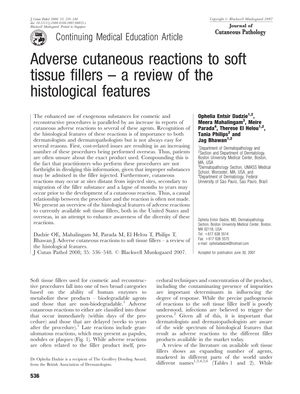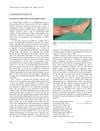Adverse Cutaneous Reactions to Soft Tissue Fillers: A Review of the Histological Features
May 2008
in “
Journal of Cutaneous Pathology
”
soft tissue fillers biodegradable fillers granulomatous reactions human enzymes immediate reactions delayed reactions granulomatous responses procedural techniques product concentration impurities infections histological reaction patterns foreign body granuloma silicone foreign body giant cell reactions hyaluronic acid fillers non-biodegradable fillers firm subcutaneous nodules fillers granulomas enzymes techniques concentration reaction patterns granuloma giant cell reactions nodules

TLDR Different soft tissue fillers can cause various skin reactions; biodegradable fillers are safer and non-biodegradable ones like silicone can lead to long-term problems.
In 2008, a review was conducted on the histological features of adverse cutaneous reactions to soft tissue fillers. The review aimed to increase awareness of the diverse reactions to different filler products, noting that biodegradable fillers typically do not cause granulomatous reactions and are metabolized by human enzymes. Adverse reactions can be immediate or delayed, with late reactions including granulomatous responses. Factors such as procedural techniques, product concentration, and impurities, as well as infections, can influence the degree of response. The document also discusses the histological reaction patterns to different fillers, such as foreign body granuloma for silicone, and foreign body giant cell reactions for hyaluronic acid fillers. It highlights that understanding the histological features associated with adverse reactions is crucial for proper diagnosis and management. Non-biodegradable fillers like silicone can cause long-term issues such as firm subcutaneous nodules and other adverse reactions. The review underscores the importance of physician awareness of potential complications from soft tissue fillers.




